Ryan Hall's Blog, page 344
October 1, 2015
What Dehydration Does to Your Running Performance

This article first appeared on Women’s Running.
Published with permission from The Jogger To Runner Book by Karl Gruber
Of all the elements involved in running, not only is proper hydration one of the most important factors of all, but it is also one of the most overlooked—often until it’s too late.
For many years now, I do almost every one of my runs carrying a handheld filled with electrolyte sports drink. It still amazes me that even experienced runners I know are vastly under-hydrated and can’t seem to figure out why they bonk on a run. Consider the fact that if you lose as little as one percent of your body weight during a run, your performance goes down by two percent! That is an amazing statistic when you consider it.
I know a number of runners who tell me that they “can’t stand to carry anything when they run,” so if you are of that ilk, make sure you run a course where you have access to water fountains or bottles of liquid you set out on the course in advance, to stay well hydrated.
So why is staying hydrated so important during your run? Because water is key in keeping your blood, which contains much needed oxygen and sodium, flowing quickly and easily to your heart, lungs and muscles—as well as helping every body part needed to run well function at its peak. However, when you become dehydrated, consequently your blood becomes thicker, which makes your heart work harder to pump blood to the body parts that need its fuel. Drinking liquid with regularity during running will then offset your liquid loss through sweating and keep everything in balance and working order.
One note of caution, especially for beginner runners, is that you can actually drink too much water while running. This is called hyponatremia, and it is difficult for many newbie runners to understand because most coaches pound into your head to, “drink, drink, drink!” As a beginning runner, you are probably not running at the same effort as a veteran runner (yet), which means you might not be sweating as much. In other words, you don’t lose liquid from your body as quickly as someone running at a harder effort and pace.
Also, mitigating factors, such as some people simply sweat more than others during exercise, can contribute to dehydration. Your weight, size and gender can also increase or decrease how much you sweat. These are all things that you more than likely will have to learn by trial and error as you start to run consistently. Make sure to pay attention to your level of hydration, as it can be the difference between running well and enjoying it, or working way harder than you need to be and not enjoying it.
To stave off hyponatremia or over-hydration, try to drink sports drinks with added sodium, more often than just plain water. This is because when you are over-hydrated, your sodium level is low and your blood volume is diminished; consequently an anti-diuretic hormone (ADH) is released, which retains water. This leads to further diluted blood and a lower sodium level. Not paying attention to these factors can lead to possible hyponatremia, which is actually more dangerous than dehydration and can be fatal! Truly there is no “one method fits all,” but the bottom line is that if you do not hydrate properly as you run, you will not run as well as you can. Finding the right balance for you between dehydration and over-hydration is something you will learn as you continue to consistently run.
The post What Dehydration Does to Your Running Performance appeared first on Competitor.com.
King of Pain: Interview with Marathon Legend Steve Jones

Thirty years ago this fall—Oct. 20, 1985—Steve Jones won his second consecutive Chicago Marathon in a course record 2:07:13, one second off the world record. A year earlier, he won Chicago in a world-record 2:08:05. Photo: Scott Draper
Long before elite-level races were set up to be time trials with pacemakers, marathons were won by hard training, tactical mid-race surges, pure guts and attrition. And perhaps no one exemplified that better than Welshman Steve Jones, a Royal Air Force aircraft technician known for his tenacious running style. With a blue-collar work ethic and a tough-as-nails demeanor, Jones took the world by storm, running away from a deep field at the 1984 Chicago Marathon and setting a new world record of 2:08:05. He returned to Chicago in 1985 and, after going through the halfway point with an unthinkable split of 1:01:42, won in 2:07:13. His career race résumé and tenacity earned him respect from his peers, race directors and fans. He also won the 1985 London Marathon, the 1988 New York City Marathon and the 1992 Toronto Marathon, and placed second in the 1987 Boston Marathon and 13th in the marathon at the 1993 IAAF World Championships. (He also finished eighth in the 10,000m at the 1984 Olympics in Los Angeles and lowered the half marathon world record to 1:01:14 in 1985.) We caught up with “Jonesy,” who recently turned 60, in his adopted home of Boulder, Colo., to talk candidly about running past and present. Now a part-time coach who works as a painter, Jones is still passionate about running.
What’s your first recollection of running?
I was 15 years of age and I remember running and it was the first time in my life I realized I had a competitive element inside me. It taught me a lot about myself. I finished fifth in the 3-mile race, wearing a pair of Woolworth Plimsolls slipping around in the mud and the snow. I can remember it like it was yesterday. I had a Beatles tune in my mind—it was “She loves me, yeah, yeah, yeah …” —and every footstep was in step with that tune and it was getting me closer to the guy in front of me. It was the first time I realized I could be good at anything and it changed my life. When the next race came six weeks later, I hadn’t run another step but I finished sixth in that race and it sort of snowballed from there.
What defined you as a runner?
One of my first coaches, who got me from being a B-team runner in my Air Force unit, to standing on the starting line at the Olympic 10,000, told me I have an insatiable appetite for hard work. It always stuck with me. Anything he threw at me, I could take. I gave it everything I could every single day. That was my enthusiasm and nothing took me away from that. I juggled everything in my life—my job, my marriage, my young family—just so I could focus on my running.
RELATED: How Steve Jones Ran His Way to Legendary Status
You were a rare runner who excelled running on the track, on the roads and on the cross country course. Which was your favorite?
I really think cross country is the purest form of running. It’s very basic. It’s a sport everybody can run, no matter if you’re at the elite level, a club runner or a just a jogger. It appeals to your basic instincts and there is always a competitive element in there. It’s running against the weather, it’s running in the mud or it’s chasing people in front of you.
What was the key to your success?
I trained really hard and it paid off for me. I’ve always been physically very strong and done very physical work for a job. It paid off in the end. I didn’t need to go to the gym, I didn’t need to over-stretch. I didn’t need to cross-train or do yoga or anything like that. I ran without heart-rate monitors, without sports cords or yoga or chiropractors or physical therapists or massage therapists. For me, it was about getting up in the morning, running to work, running at lunchtime, go back to work and then run home from work. It’s that kind of mentality, but I knew every stride was helping me.
Sometimes I’d be out there at midnight, doing 4 x 5 minutes on a country lane and all I could see was a little dot of a light at the end of the road. I would be charging down that street in the pitch black, and in my head, Carlos Lopes, Mike McLeod and Brendan Foster were on my shoulder. I just drove myself, mentally, as much as physically.
RELATED: 6 Ways to Simplify Your Running With Steve Jones
How has the marathon evolved in the past 30 years?
It’s obviously more competitive. There are more pacemakers in the races now. It’s not so much man-to-man racing anymore, it’s time trials. I think the sport has lost a little bit of appeal to me as an elite runner from the 1970s, ‘80s and ‘90s because it’s not about the guys going out there and running to hurt themselves anymore. It’s about having six people around you at 20 miles and all but one drop out and it leaves one guy to the finish line. Yes, it’s still running 26.2 miles and they’re running 2:03-2:04-2:05, which is significantly faster than I used to run, but you don’t see that competitive element anymore. It’s almost like a gang race, almost like they’re ganging up on everyone in the race to get the right outcome. As long as a Kenyan or an Ethiopian wins, they don’t really care about anybody else. It would be nice to be a little more selective—who you accept entry from or invite to your races—to have the right mix of core international racing element.
Do you miss the thrill of racing?
Mostly I miss the fitness. There have been times in the past few years when I have missed certain aspects of running, whether it’s being on the start line of a major marathon or a local road race. But I don’t miss the training. But then sometimes I miss the training, but I don’t miss the racing element. For the most part, I have no regrets. I did it all. I enjoyed myself. I enjoyed myself and I don’t live my running through my athletes. I have had runners who have joined my group who have known nothing about me and who have left my group knowing nothing about me. It’s not about me, it’s about them.
What do you get out of coaching?
I coach at a different level than some of the other groups in Boulder. I have a small elite athlete base and a larger semi-elite group of club runners. My job as a coach, mentor or advisor is to help them improve. Not necessarily to help them win Chicago or London or New York or any of the competitive Rock ‘n’ Roll half marathons. It’s about getting the best out of themselves. And if I can help them do that, then I’m doing my job. My job isn’t to get them to the start line of the Olympics right now. Hopefully with the right development and the right adaption of my philosophy, it could get some runners to those places. But it’s one step at a time.
You were known for training hard and turning yourself inside out on race day with a win-or-bust tenaciousness. Is it hard to coach that?
It’s not easy to coach that. And that’s the biggest challenge I have as a coach. If you talk to the runners I work with now, they will tell you they’ve seen the benefits of my philosophy and the type of training I’m asking them to do. Are they there yet? No, they’re probably doing 80 to 85 percent of what I was doing. While they might be young enough and strong enough to try to cope with it, I’m not ready to lay it all on them right now. My philosophy is based on what I did. I made it to all of the major championships in cross country, track and road racing, so I know it works. I was an experiment of one, so they just have to trust me.
How big of a problem are performance-enhancing drugs in running?
It’s a problem, but I think it can be eliminated to a certain extent. We’re not tough enough on the people who get caught. There is no deterrent. If you get caught, after a two-year ban, you’re back in there again at the Olympics, running New York or Chicago or the world championships. In my mind, the sport should have lifetime bans. I know people will say that after two years off, they pay their dues. But you never know what they’re doing in those two years. It’s sad. Yes, it went on in my time. Back then it was mainly the Eastern Bloc runners doing it. Since the walls have fallen down, we’ve found out who was doing it. I remember having great races against some of those people and every major finalist—Commonwealth, European, Olympics or Worlds—I made those finals, but those people who took the drugs were instrumental in breaking the races up and ruining it for everybody else. Is it going on now? I hear it is. I hear rumors, but I kind of keep my head in the sand because it doesn’t affect the people I work with right now.
How has running changed?
Mass participation has hurt the sport, in my mind. It’s made a lot of people a lot of money. I have to be careful what I say because I get called out on it sometimes, but I don’t believe that starting and finishing a marathon makes you a marathoner. I don’t believe that. If you’re racing it to go as fast as you can, that’s completely different than being part of an event and just wanting to get from point A to point B. Like I said, I’m a purist. That’s not to say I dismiss people who are doing it. I have tremendous admiration for people who do that. I get emotional when I’m watching a marathon and see people after three and a half hours finishing a marathon. You start to cry, because you know what they’re going through. The guys at the sharp end go through the same thing as well. They want to stop after 20 miles or they have a blister on their foot or they hit the wall and are weaving all over the place. That’s the best part about all of this: you experience what the runners up front are doing.
What bothers you about running today?
The industry is huge, and the industry is running the sport now, not the sport running the industry. I really believe, if you go back to my era, you had well-established marathons in the UK and you’d get 200 runners. But they were all runners who were running hard and running fast times. Now you’re lucky to get that many in a half marathon. The rest of the people just want to be part of the event. I think it’s great in many ways, but the competitive sport hasn’t grown. The pinnacle hasn’t gotten higher or sharper because of these events and you would have thought after all this time that it would have. But the focus has changed and now there are absurd headlines, and I have to say, you are just as guilty, publishing articles like ‘5 Weeks to a Faster 5K’ or ’10 Weeks to a Marathon PR.’ It’s bullshit. It’s just selling magazines or it just caters to people who are running 4 hours for a marathon or 25 minutes for a 5K.
You’re not a proponent of heart-rate monitors, smart watches or modern sports nutrition. Why not?
There is no easy way. And that’s what all of these gadgets try to show you is some kind of easier way of training. But there isn’t one. I ran without heart-rate monitors, without sports cords or yoga or chiropractors or physical therapists or massage therapists. I’m a purist at heart. To me, it’s about having your running shoes on your front doorstep and putting them on and going out and running hard. It’s not about measuring how far you’re running, it’s not about checking your heart rate or drinking the right drinks and eating the right foods. All it’s doing is teaching runners to run within their limits so there is no ability to run to their pain threshold or several other thresholds.
Distance running is all about stress and coping with stress. All these gadgets and gimmicks, they take the stress away from it. So when you’re in a race and you don’t have all that stuff on your arms or your pockets or your favorite drink, you don’t know how to cope. You miss your first water stop and you think, “Oh my god, my race is screwed.” But it’s not, you’ve still got eight more water stops to get to. It’s just different to what I was used to. Towards the end of my career, heart-rate monitors started to come in and special drinks too. I broke a world record on Mars bars and Diet Coke, so I’m a good argument against all of the other stuff.
The post King of Pain: Interview with Marathon Legend Steve Jones appeared first on Competitor.com.
September 30, 2015
Out There: It’s All Uphill From Here
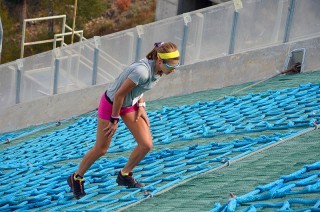
Photo: Susan Lacke
Ahmet Arslan’s winning time for last Saturday’s Red Bull 400 was 3 minutes and 58 seconds.
Sounds a bit slow for a 400-meter dash, right? You could blame it on the altitude—after all, the starting line of the race was situated at a wind-sucking 6,780 feet above sea level in Park City, Utah.
Or maybe it was due to the fact that the finish line was located at 7,308 feet of altitude. To get from Point A to Point B, athletes had to run up an Olympic ski jump. For the math-averse, that’s 528 feet of climbing in just 400 meters (or, as most of us would call it, “a wall.”)
The Red Bull 400 is not a fast event. It’s not a place to knock out a few easy hill repeats. And it’s definitely not for people with sound decision-making skills. Nothing about sprinting up a ski jump is logical or smart.
In other words: These are my kind of people.
“I’m thinking about signing up for the race, just to see what it’s like,” I told my handlers at Competitor.
“You’re out of your mind,” replied my boss. “I would probably roll back down the hill like those English people chasing the wheel of cheese.”
He was right. It was a dumb idea. I stared at the registration page online for a moment more before closing the window. Instead, my wheel of cheese and I made our way out to the K120 Nordic Ski Jump to spectate.
RELATED: Photos: Red Bull 400 in Park City
Ski jumps are designed for maximum speed going downhill. When you go the opposite direction…well, you get the opposite effect. From the first wave of the Red Bull 400, it became clear this wasn’t your normal hill run. For starters, most hills don’t have ropes attached to keep you from falling backwards. They also don’t have oxygen masks stationed every 100 meters.
“Has anyone needed to use that yet?” I asked an EMT carrying a tank of oxygen to the summit.
“Not yet,” he smiled (did I detect a hint of sadism?). “But give it time.”
As I sat amidst the nervous racers awaiting their wave starts, I struck up a conversation with a girl from Salt Lake City. I was curious as to how she prepared for something like the Red Bull 400. Were there lots of hill repeats? Perhaps some lower-body strength sessions at the gym?
She pursed her lips and shook her head: “Mostly I just prayed a lot.”
“Solid strategy,” I replied before gesturing at the ski jump. “Your wave starts soon. Have you thought about what it might be like to run up that?”
“I‘m trying not to, actually,” she laughed nervously. “Can we talk about something else?”
Ah, denial. I wished her luck and (very slowly) made my way up the staircase leading to the finish line. Along the way, I crossed paths with a guy from Orem, Utah coming down the stairs after finishing second in his heat. His weakened legs visibly vibrated with every step.
“How was it?” I asked.
“F***ing awesome!” he yelled, raising his hand in the air for a high-five. The action was rescinded quickly when he realized holding the handrail was the only thing keeping him upright.
Upon making it to the top, a guy from Kentucky said the race was “brutal.” A track and field athlete from Utah State University described the 400 as “similar pain, just in different muscles” compared to his specialty, the mile. A woman from Park City said it was the hardest—and coolest—thing she had ever done. Most people, though, just moaned while curled into a fetal position.
“All I could think was ‘Shoot me now’” said a competitor from Park City. “About three-quarters of the way up, I wanted to quit so bad, man.”
“So why didn’t you?”
“I was scared to let go of the rope. It’s a long way down.”
And so it went, wave by wave, as the finishers went from vertical to horizontal the second they crossed the finish line. The oxygen masks were put to good use, as were the many puke buckets.
“That sucked,” they moaned.
“I hurt so bad,” they cried.
“I’m totally coming back next year,” they laughed breathlessly.
The most surprising thing about the Red Bull 400 is not that hundreds of people were dumb enough to spend a Saturday morning running up a ski jump like sick billy goats. The most surprising thing is that they loved it. Not one person I talked to said they regretted their decision to enter the race. They were satisfied. Tired, quivering, and puking, but still, very satisfied.
Sometimes, we need to do dumb things. Too often, we let logic override ambition. We convince ourselves we’ll “never be a runner”; that signing up for that race would be crazy; that trying to qualify for Boston is a fool’s dream; that we’d roll down a hill like a wheel of cheese if we tried to run up it. We hide behind “logic” when we really mean “fear”—fear of pain, fear of failure, fear of looking stupid.
Sometimes it’s necessary to tell logic to shut up. Doing a so-called “dumb” thing often requires facing a fear, and that’s actually quite smart. Because these competitors were idiots, they were able to learn their bodies were capable of accomplishing something that defies logic. Running up a ski jump isn’t how “smart” people spend their Saturday mornings, but such people rarely get bragging rights for sleeping in and eating brunch.
That said, if anyone needs me, I’ll be doing hill repeats on the steepest slope I can find in my neighborhood. My kind of people lack sound decision-making skills, and I have every intention of joining them on the starting line next year.
****
About The Author:
Susan Lacke does 5Ks, Ironman Triathlons and everything in between to justify her love for cupcakes (yes, she eats that many). Susan lives and trains in Salt Lake City, Utah with three animals: A labrador, a cattle dog, and a freakishly tall triathlete husband. She claims to be of sound mind, though this has yet to be substantiated by a medical expert. Follow her on Twitter: @SusanLacke.
The post Out There: It’s All Uphill From Here appeared first on Competitor.com.
Workout of the Week: Sharpening Sessions
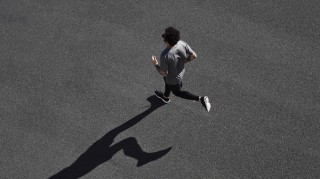
The main aim of your sharpening workouts is to arrive at the starting line feeling confident, rested and ready to race. Photo: Shutterstock.com
Race week can be summed up as a stressful stretch of days culminating in, at most, a few hours of extreme effort. No big deal, right?
After months of mega mileage, dozens of long runs and week after week of killer workouts, you’re in the best shape of your life. All you need are a bunch of days off and one or two more really fast speed sessions in the few days before the race to put a cap on your confidence levels.
Or maybe you don’t.
Many competitive runners have their trigger finger too close to the panic button in the final seven days before a big race. The tendency is to drastically reduce your training volume, take a lot of days off (you want to be well rested, right?) and spin your wheels so quickly when you do run that race pace feels like a glorified jog.
Woah woah woah, not so fast!
Regardless of your ability level, you can lose a lot more than you’ll gain during race week. The main goal of a race-week workout(s) is to keep the ball rolling (if you’re not used to taking days off in training, now is not the time to start doing it!) and get to the starting line feeling calm, confident and ready to run your best.
RELATED: Tapering Dos and Don’ts For Marathoners
So what’s the best way to go about achieving this end? Definitely taper your weekly mileage (reducing your peak volume by 20-30 percent is plenty), but more importantly, try to stick as close to your regular routine as possible and be careful not to overdue it with speed workouts. Here are some examples of how to do it for a variety of different race distances:
Race: 5K/10K
Sunday: 10 miles easy
Monday: 4-6 miles easy + 6 x 20-second strides
Tuesday: 2-mile warmup, 3 x 1 mile @ 5K-10K race pace (no faster!) with 2-3:00 recovery between reps, 2-mile cooldown
Wednesday: 4-6 miles easy
Thursday: 2-mile warmup, 8 x 200m @ 3K-5K race pace with a SLOW 200m jog recovery between reps, 2-mile cooldown
Friday: 3-5 miles easy or OFF
Saturday: 3-4 miles easy + 6 x 20-second strides
Sunday: 5K or 10K RACE (10-12 miles total)
Race: Half Marathon
Sunday: 10-12 miles easy
Monday: 4-6 miles easy + 6 x 20-second strides
Tuesday: 2-mile warmup, 2 miles @ goal half marathon race pace, 1 mile easy, 5 x 1:00 pickups @ 5K-10K race pace with 2:00 jog recovery between reps, 2-mile cooldown
Wednesday: 4-6 miles easy
Thursday: 2-mile warmup, 3 x 800m @ 10K race pace with 400m jog recovery between reps, 2 x 400m @ 5K race pace with 200m jog recovery between reps, 2-mile cooldown
Friday: 3-5 miles easy or OFF
Saturday: 3-4 miles easy + 6 x 20-second strides
Sunday: RACE (16-17 miles total)
Race: Marathon
Sunday: 10-12 miles easy
Monday: 4-6 miles easy + 6 x 20-second strides
Tuesday: 2-mile warmup, 6 x 800m @ 10K race pace with 2:00 recovery between reps, 2-mile cooldown
Wednesday: 4-6 miles easy
Thursday: 2-mile warmup, 2 miles at goal marathon pace, 2-mile cooldown
Friday: 3-5 miles easy or OFF
Saturday: 3-4 miles easy + 6 x 20-second strides
Sunday: RACE (27 miles total)
RELATED: The Art of Peaking
The post Workout of the Week: Sharpening Sessions appeared first on Competitor.com.
2016 Boston Marathon Qualifier Breakdown Announced
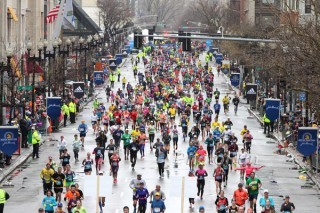
To qualify for the 2016 Boston Marathon, applicants needed to be at least 2 minutes, 28 seconds faster than their age group and gender standard to make the cut. Photo: PhotoRun.net
The field of qualifying runners for the 2016 Boston Marathon has been filled and, overall, it is a considerably faster group of runners that made the cut compared to the 2015 race.
The Boston Athletic Association (B.A.A.) today announced that applicants who were 2 minutes, 28 seconds or faster than the qualifying time for their age group and gender were accepted into the 2016 Boston Marathon. That compares with a minimum time of at least 62 seconds faster than age-group/gender standards to get into the 2015 Boston Marathon and 1:38 or faster to get into the 2014 race. Qualified applicants who didn’t make the cutoff will be sent notice today that they didn’t get in.
In preparation for the 2016 race, the B.A.A. implemented the same registration process for qualified runners as it used in the 2012, 2013, 2014, and 2015 marathons, allowing the fastest qualifiers to register first. The 120th Boston Marathon will be held on Monday, April 18, 2016.
In cooperation with the Commonwealth of Massachusetts and the eight cities and towns along the Boston Marathon route, the B.A.A. has set the field size for the 2016 Boston Marathon at 30,000 official entrants. More than 80 percent of the field will be comprised of athletes who have met the qualifying standards. The balance will consist of invitational entrants, many of whom run for local charitable organizations. Since 1989, between the B.A.A.’s Official Charity Program and principal sponsor John Hancock Financial’s Non-Profit Bib Program for the Boston Marathon, more than $234 million has been raised for charity.
Registration for runners who met the B.A.A.’s qualifying standards for the 2016 Boston Marathon began on Monday, Sept. 14 at 10 a.m. ET using a “rolling admission” schedule and continued through Saturday, Sept. 19 at 10 p.m. ET. Registration re-opened on Monday, Sept. 21 at 10 a.m. and application submissions were received through Wednesday, Sept. 23 at 5 p.m. ET.
Qualifiers who were two minutes, 28 seconds (2:28) or faster than the Qualifying time for their age group and gender were accepted into the 2016 Boston Marathon.
- 28,594 applications were received during the registration period for qualifiers.
_ 24,032 qualified applicants have been accepted to date or are in the process of being accepted, pending verification of their qualifying performance.
- 4,562 applicants were unable to be accepted due to the large number of eligible qualifiers who submitted an application for entry combined with field size limitations.
Details of the B.A.A.’s registration process for qualifiers can be found on the following web page: http://www.baa.org/races/boston-marathon/participant-information/athlete-registration.aspx
During the registration period, the breakdown of accepted qualifiers was as follows:
- 4,744 qualifiers met their qualifying time by 20 minutes, 00 seconds or faster.
- 7,495 qualifiers met their qualifying time by 10 minutes, 00 seconds or faster.
- 6,849 qualifiers met their qualifying time by 05 minutes, 00 seconds or faster.
- 4,540 qualifiers met their qualifying time by 02 minutes, 28 seconds or faster.
- 404 qualifiers were accepted based on finishing 10 or more consecutive Boston Marathons.
During the second week of registration, 5,252 qualifiers were accepted.
Qualifying performances for the 2016 Boston Marathon must have been run between September 13, 2014 and September 19, 2015. Notices via e-mail to those accepted will be issued by the B.A.A. beginning today.
Of the registered athletes, 404 qualifiers who have an active streak of ten or more consecutive Boston Marathons completed entered during a pre-registration period in August and have been accepted. In the coming months, qualified elite athletes and athletes with disabilities will be added to the field.
The names of those runners who have been accepted will be posted on the “Entrants” page of the B.A.A.’s web site: http://www.baa.org/races/boston-marathon/participant-information/entrants.aspx
“For so many runners, qualifying and participating in the Boston Marathon is the highlight of their running careers,” Tom Grilk, B.A.A. Executive Director said in a release. “It is extraordinarily difficult to inform those who have qualified that the field size is limited and there is not enough space for everyone. We have worked hard to ensure a fair and balanced registration process that gives qualified runners the best opportunity to participate in the Boston Marathon. In order to ensure the greatest race experience for runners, spectators, and everyone in the community, we work with many constituencies to determine the most optimal field size.”
Next year’s Boston Marathon will mark the 31st consecutive year that the event will have John Hancock Financial as its principal sponsor.
The post 2016 Boston Marathon Qualifier Breakdown Announced appeared first on Competitor.com.
September 29, 2015
Shoe Of The Week: The North Face Ultra MT
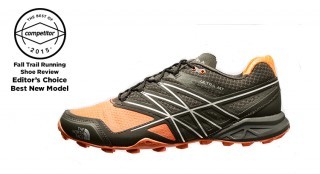
Our wear-test team loved the traction, durability and agility of The North Face Ultra MT. Photo: Scott Draper
Fit-feel-ride: With its Vibram “Megagrip” outsole, its durable ripstop mesh upper that wraps around the midsole and the semi-firm ride of the cushioning, The North Face Ultra MT is a hard-charging mountain shoe. It actually feels strong and solid on the foot, and holds up to sharp, rocky terrain. The traction of this shoe is what stands out the most. It gripped everything from slick to dry rock, soggy ground, dusty trails and more. Some testers craved more cushioning around the heel collar near the tongue, and others noted how the narrow fit of these won’t work for everyone. The thin yet nicely padded tongue lays comfortably on the foot, and the “FlashDry” lining wicks sweat and moisture in a jiff. This shoe also comes in a Gore-Tex version. For how durable and burly this shoe is, it’s still fairly lightweight. The only detractor is the non-stretchy laces (which need double knotting) could be felt by some of our testers across the top of the foot, but most of our testers really raved about this shoe’s traction, durability and agility.
This shoe is for you if … you’re a trail running fiend and don’t want to hold back on mountain runs.
Price: $130
Weights: 9.7 oz. (men’s); 8.2 oz. (women’s)
Heel-Toe Offset: 8mm; 23mm (heel), 15mm (forefoot)
Info: TheNorthFace.com
RELATED: Shoe Of The Week—Hoka One One Speedgoat
RELATED: Fall 2015 Trail Running Shoe Review
The post Shoe Of The Week: The North Face Ultra MT appeared first on Competitor.com.
Do More Expensive Running Shoes Get Better Reviews?
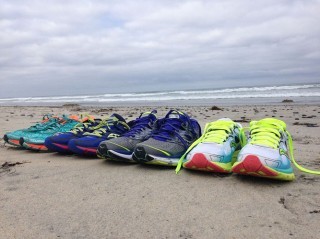
Photo: Nils Nilsen
RunRepeat.com, an independent site that features user-generated reviews of running shoes, recently explored the data from 134,867 shoe reviews on its site to closer examine the relationship between favorable reviews and the price of shoes.
The results are interesting: Of the 391 running shoes from 24 brands reviewed on their site, the trend line suggests that expensive running shoes get lower ratings than more affordable ones. In the most extreme examples, the 10 most expensive running shoes (generally $175 and up) received an average rating of 79, while the 10 most affordable running shoes ($65 and under) got an average rating of 86.
Why would that be?
“One might expect that if a runner buys an expensive shoe, he will have higher expectations for the quality of the shoe and therefore he will more easily get disappointed,” writes Jens Jakob Anderson, founder of RunRepeat. “True, the more you spend, the more you expect. Though, the list price should reflect expectations. If you spend more on a running shoe, you would logically expect to get a better product.”
Anderson also acknowledges that reviews, although plentiful and user-generated, are aggregated only from his site, which attracts a certain type of runner. “That being said, we still believe our conclusion is right, and that the potential biases have not influenced the data in any very significant direction,” he said.
The most extreme example was Skechers, which had the lowest average price of shoes reviewed on RunRepeat, while also having the highest ratings. In all, the highest-rated shoes on RunRepeat are Skechers, Saucony and Vibram FiveFingers. In total, running shoes from running specialist brands are rated 2.8 percent higher than running shoes from brands that do more than just running shoes, like Nike or adidas.
You can view all the findings here.
The post Do More Expensive Running Shoes Get Better Reviews? appeared first on Competitor.com.
Jessica Hofheimer: A Tune-Up Race in Training

During week after week of marathon training, we test our limits and prepare ourselves for running 26.2 miles as best we can. No matter the workout—whether it’s fast intervals around the track, a steady hard-effort tempo, a long run endurance builder, an easy shakeout or a super-slow recovery run—every time we lace up our shoes we run purposefully and with our marathon goal in mind. These runs all tell us something about ourselves and give us an idea of what to expect on marathon day, but no one singular effort will teach us nearly as much as a tune-up race. For that reason, I like to run a race (anything from a 10K to a half marathon distance, ideally) a few weeks before I toe the starting line at a marathon.
It’s almost time for my cadet Kristi to run her first marathon in Chicago! A couple weeks ago she did a local half marathon as part of her longest run ever, doing a few miles before and a few miles after the race. She practiced her fueling and hydration, tested shoes and apparel and ran longer than she ever had before in one single effort. It was tough—but she persevered and rocked it. Kristi is now cruising into her taper knowing that she can tackle 26.2 miles along the streets of Chicago!
If a race before your race sounds like too much, think of a tune-up as an opportunity to have fun doing what you love, and learn something in the process!
Logistics
A late-cycle race gives the chance to practice race day logistics. What are you going to eat the day and night before your race, and the morning of? What will you wear and carry in your race day bag? What will you eat and drink during the race? Addressing all of these questions at a tune-up race gives you more confidence when it’s time for your marathon.
Testing, testing 1-2-3
A tune-up race is a fitness test. Whether you decide to race it all-out and see how well you can run that particular distance, or you use it as a chance to practice a goal marathon pace, it’s an opportunity to test your fitness. It’s also a valuable reality check and opportunity to examine marathon day expectations. Running a tune-up at marathon pace requires a great deal of self-control that will come in handy on marathon day. Pushing to your limits will perhaps show you are capable of more than you realized. Whatever the outcome, learn from it and adapt your marathon goal to your current fitness.
Keep Calm & Carry On
Toeing the line before the big day can really help with easing nerves about how things will go and how you will handle the unexpected on race day. Doing a test run builds our confidence in our abilities to stay strong and relaxed when things don’t go how we envisioned they would.
The post Jessica Hofheimer: A Tune-Up Race in Training appeared first on Competitor.com.
Photos: Scenes From the 2015 Ultra Race Of Champions
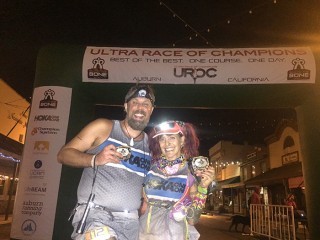
After two successful years in Colorado, the Ultra Race of Champions moved west to a new venue in Auburn, Calif. True to the UROC mission, the new course featured mixed terrain to challenge runners of all skill sets, including many new trails in the Auburn State Recreation Area that had never seen a footrace and amazing singletrack routes along the American River.
The 100K championship race (which once again featured a $20,000 prize purse) was a battle between some of the sport’s young up-and-coming stars, with 29-year-old Justin Houck of Mercer Island, Wash., the overall winner in 8:53:22 over 29-year-old Mario Mendoza (9:12:09), 19-year-old Ford Smith (9:47:17) and 22-year-old Tyler Van Dyke (9:59:59). In the women’s championship race, Magdalena Boulet and Kaci Lickteig renewed the friendly rivalry they forged three months earlier while finishing first and second, respectively, at the Western States 100. Boulet, a 2008 U.S. Olympic marathoner from Oakland, Calif., fresh off a runner-up finish at the CCC 100K in Chamonix, France, came out on top again (10:03:29), outlasting the tenacious Larisa Dannis (10:25:41), Lickteig (10:56:22) and Kerrie Wlad (11:22:17). “Auburn truly rolled out the red carpet for the Ultra Race of Champions,” says co-race director J. Russell Gill, “making the elite, age group runners and race organizers (Bad to the Bone Sports) very excited about this new championship venue.” (Full results are on the UROC website.)
Check out the photo gallery from the race below!
Photo Gallery
1 of {count}
Back to Start
View Larger Image
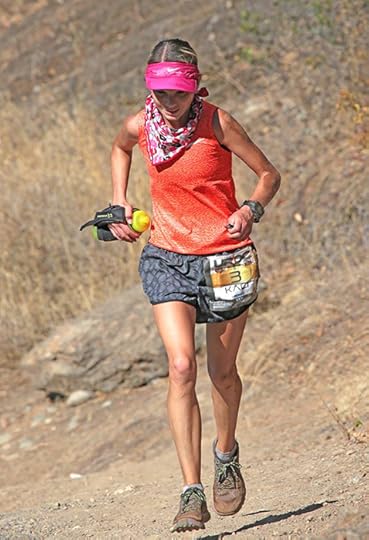
Photo: Rick Watson
View Larger Image
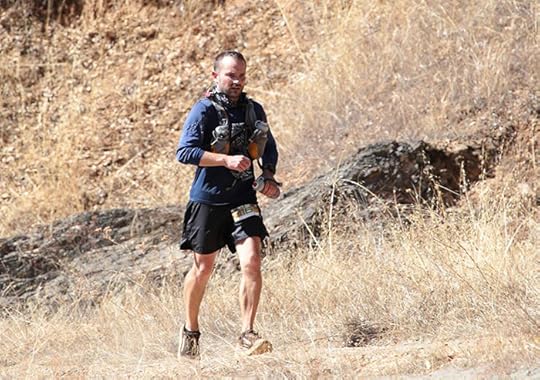
Photo: Rick Watson
View Larger Image
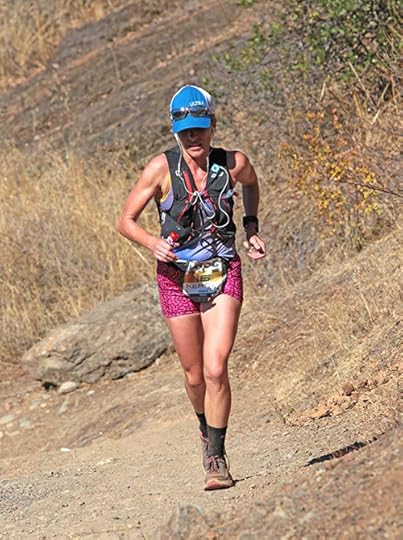
Photo: Rick Watson
View Larger Image
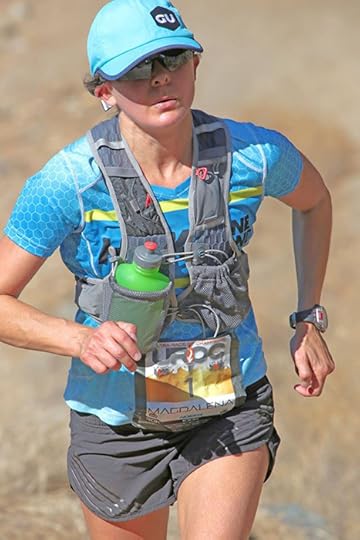
Photo: Rick Watson
View Larger Image

Photo: Rick Watson
View Larger Image
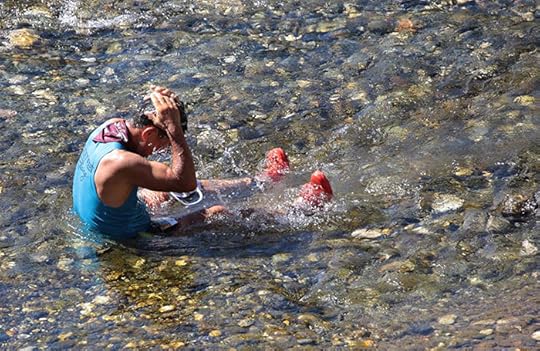
Photo: Rick Watson
View Larger Image
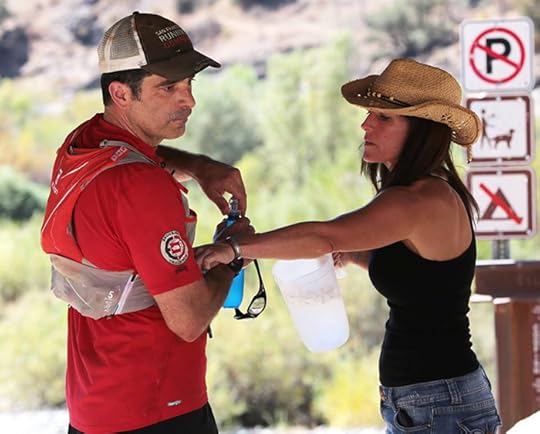
Photo: Rick Watson
View Larger Image
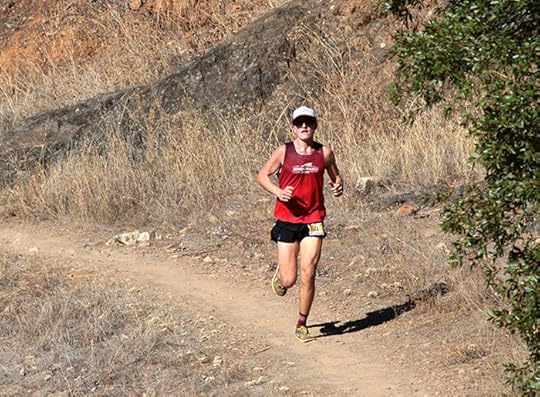
Photo: Rick Watson
View Larger Image
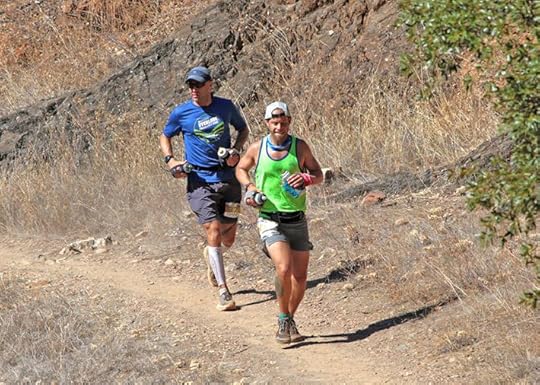
Photo: Rick Watson
View Larger Image
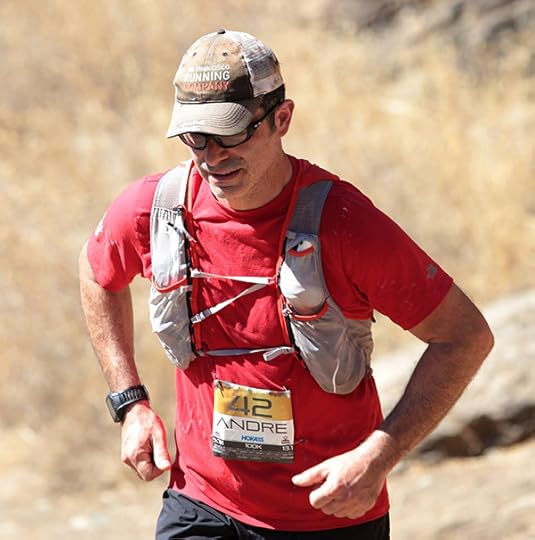
Photo: Rick Watson
View Larger Image
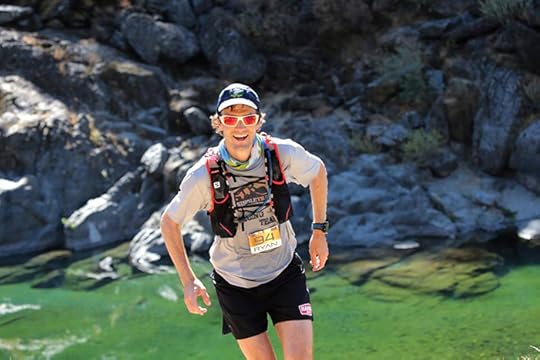
Photo: Rick Watson
View Larger Image
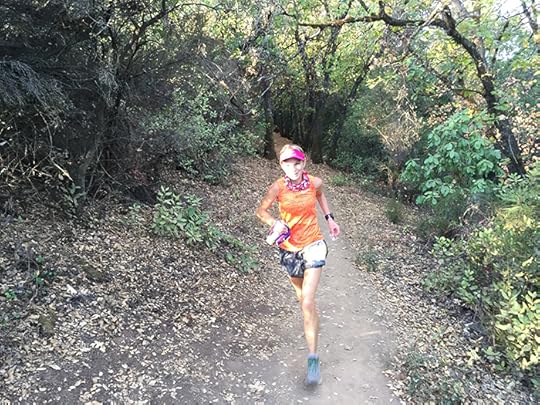
Photo: J. Russell Gill III
View Larger Image

Photo: J. Russell Gill III
View Larger Image

Photo: J. Russell Gill III
View Larger Image
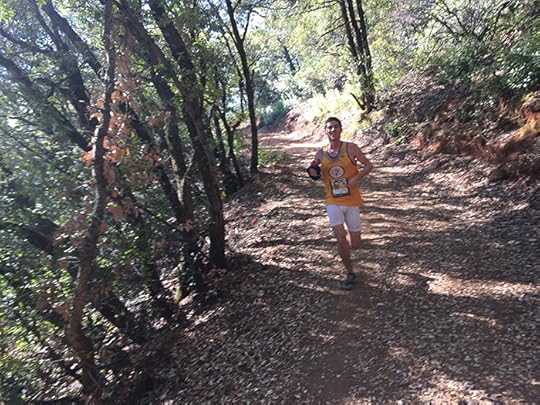
Photo: J. Russell Gill III
View Larger Image
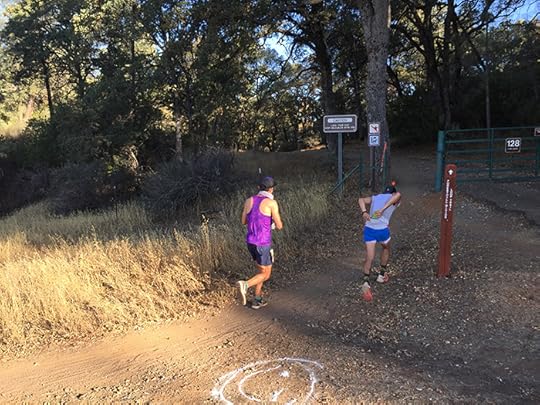
Photo: J. Russell Gill III
View Larger Image
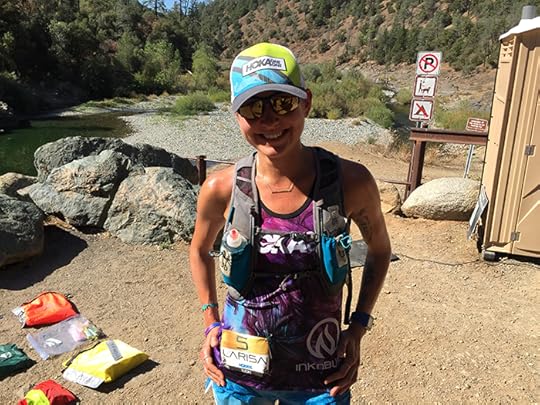
Photo: J. Russell Gill III
View Larger Image

Photo: J. Russell Gill III
View Larger Image

Photo: J. Russell Gill III
View Larger Image

Photo: J. Russell Gill III
View Larger Image
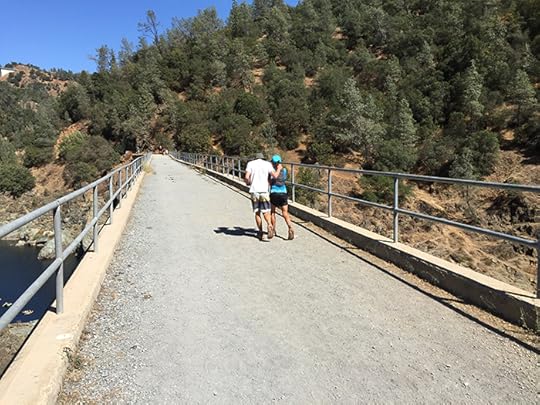
Photo: J. Russell Gill III
View Larger Image
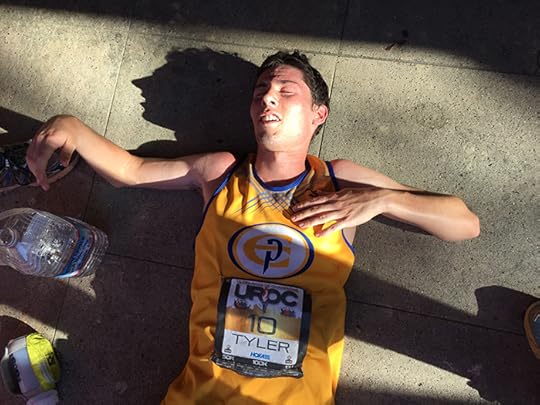
Photo: J. Russell Gill III
View Larger Image
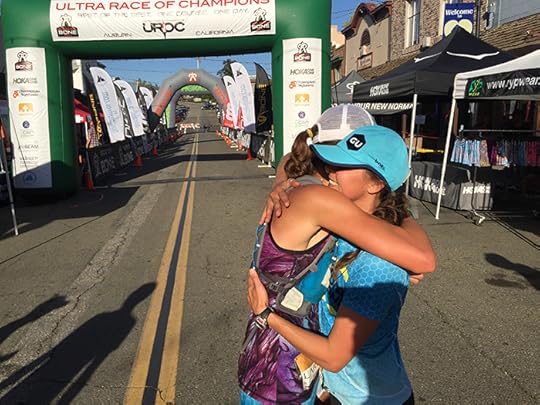
Photo: J. Russell Gill III
View Larger Image
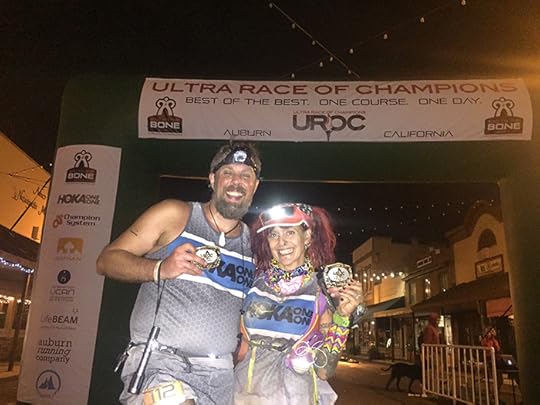
Photo: Rick Watson
View Larger Image

Unknown-13
Photo: J. Russell Gill III
Related Galleries
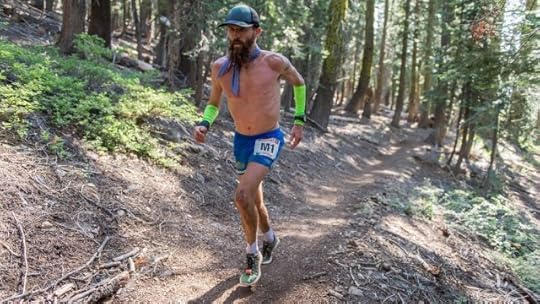
Photos: 2015 Western States Endurance Run

Photos: Ultra Race of Champions In Colorado
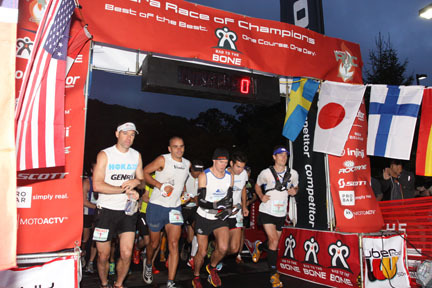
Photo Essay: Ultra Race Of Champions

More Galleries
The post Photos: Scenes From the 2015 Ultra Race Of Champions appeared first on Competitor.com.
Sneak Peek: Special-Edition Shoes for the 2015 New York City Marathon
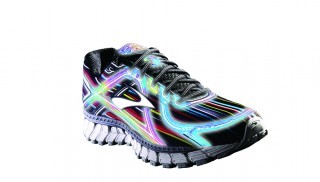
Although ASICS is the official footwear sponsor of the New York City Marathon, every year many shoe brands (including ASICS, of course) create special-edition models to commemorate the race. Here’s a look at several new models celebrating this year’s race on Nov. 1. These shoes will be available starting in mid- to late October at select New York City-area retailers, the New York City Marathon race expo and at each brand’s online store.
Photo Gallery
1 of {count}
Back to Start
View Larger Image
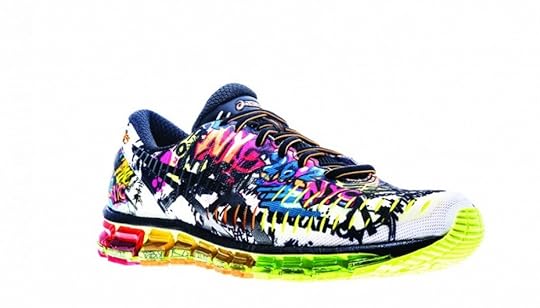
ASICS GEL-Quantum 360 NYC, $170
View Larger Image
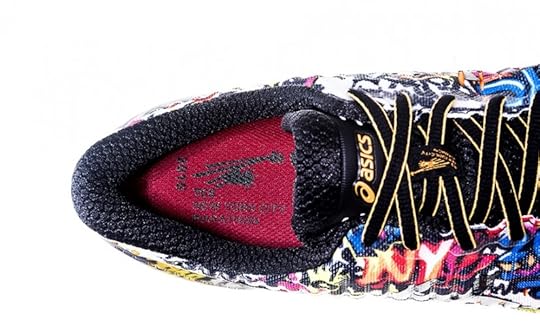
ASICS GEL-Quantum 360 NYC, $170
View Larger Image
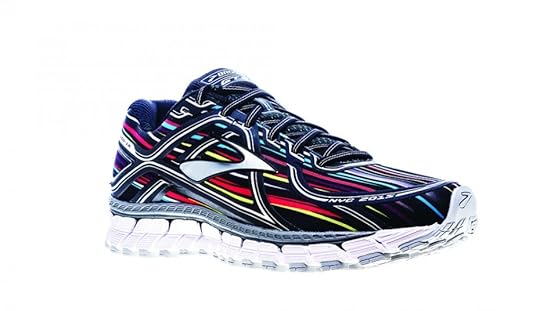
Brooks Bright Lights, Big City Adrenaline GTS 16, $130
View Larger Image
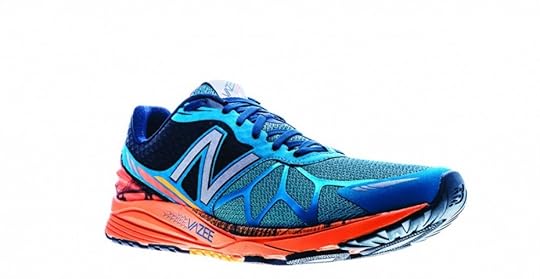
New Balance Vazee Pace NYC, $120
View Larger Image
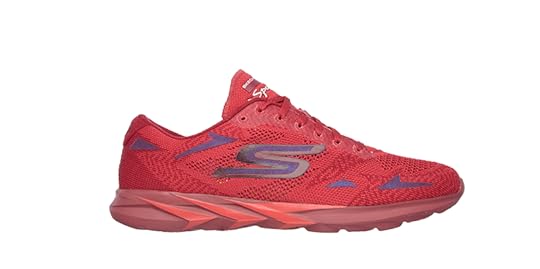
Skechers GoMeb Speed 3 — 2016 NYC, $125
View Larger Image
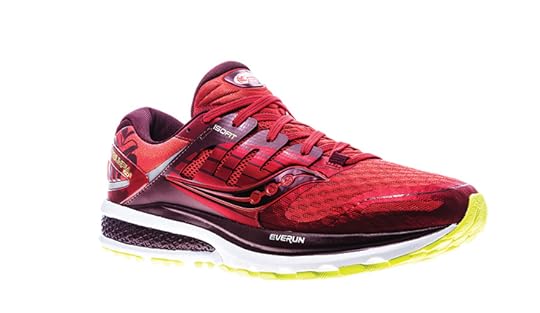
Saucony Triumph ISO 2 NYC, $160
View Larger Image
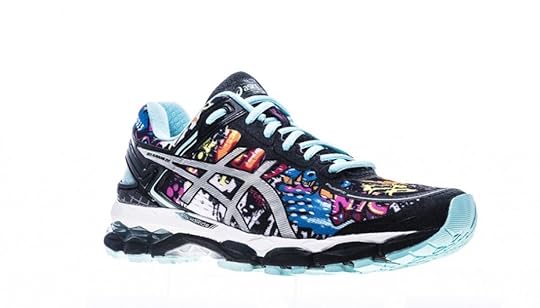
ASICS GEL-Kayano 22 NYC, $160
View Larger Image
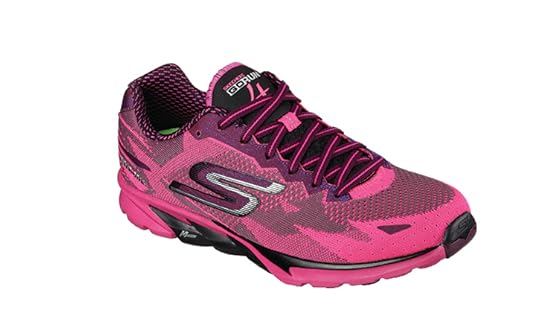
Skechers GoRun 4 — 2016 NYC, $105
View Larger Image

Saucony Triumph ISO 2 NYC, $160
View Larger Image

Skechers GoRun 4 — 2016 NYC, $105
View Larger Image
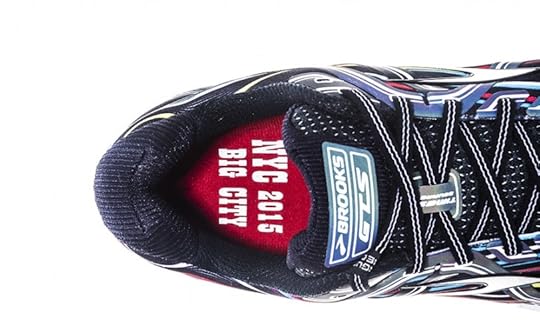
Brooks Bright Lights, Big City Adrenaline GTS 16, $130
View Larger Image
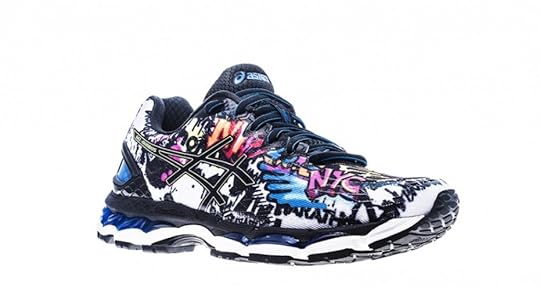
ASICS GEL-Nimbus 17 NYC, $150
View Larger Image
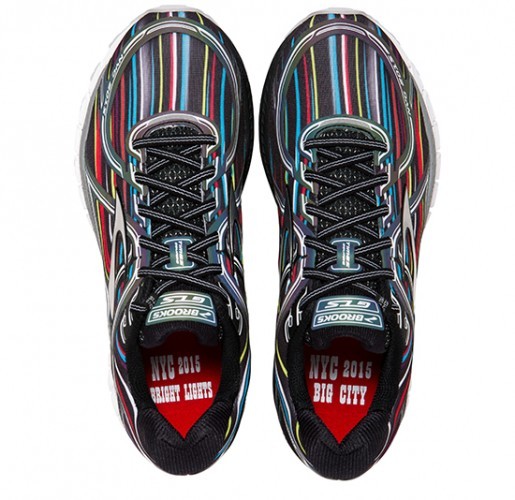
Brooks Bright Lights, Big City Adrenaline GTS 16, $130
View Larger Image
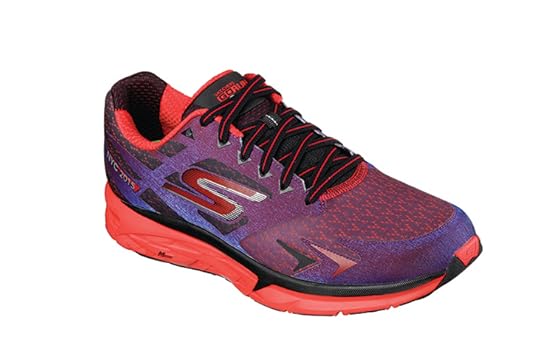
Skechers GoRun Forza NYC, $120
View Larger Image
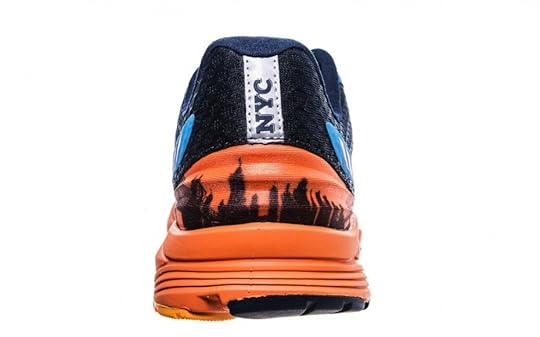
New Balance Vazee Pace NYC, $120
View Larger Image
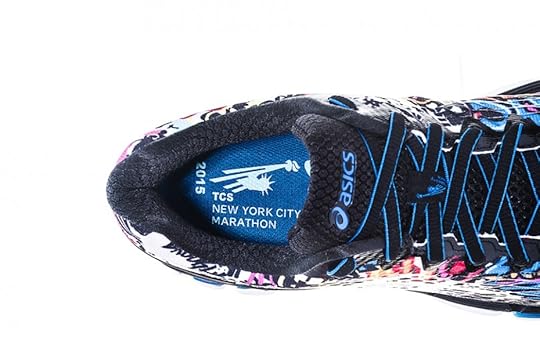
ASICS GEL-Nimbus 17 NYC, $150
View Larger Image
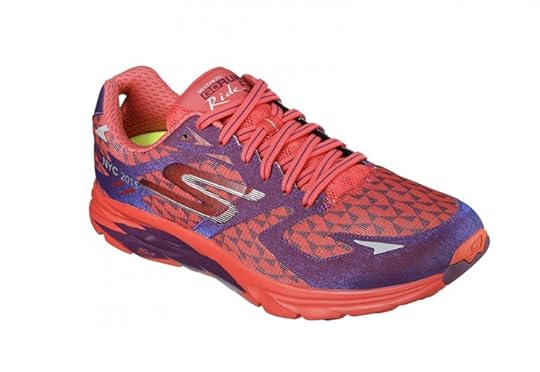
Skechers GoRun Ride 5 NYC, $100
View Larger Image
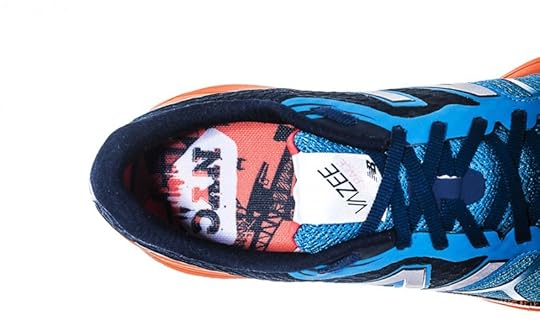
New Balance Vazee Pace NYC, $120
View Larger Image

ASICS GEL-Kayano 22 NYC, $160
View Larger Image

Saucony Triumph ISO 2 NYC, $160
View Larger Image
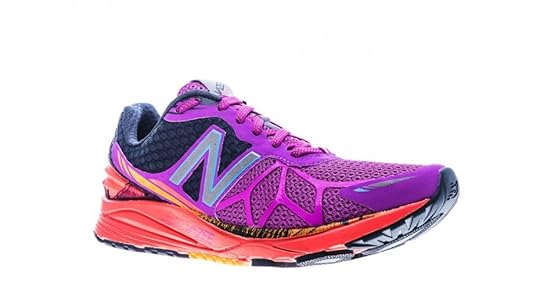
New Balance Vazee Pace NYC, $120
View Larger Image

Brooks Bright Lights, Big City Adrenaline GTS 16, $130

More Galleries
The post Sneak Peek: Special-Edition Shoes for the 2015 New York City Marathon appeared first on Competitor.com.
Ryan Hall's Blog
- Ryan Hall's profile
- 21 followers



